<< Previous | Displaying results 2501-2525 of 6769 for "" | Next >>
SS chief Heinrich Himmler (left) and Hans Frank, head of the Generalgouvernement in occupied Poland. Krakow, Poland, 1943.
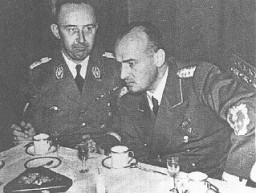
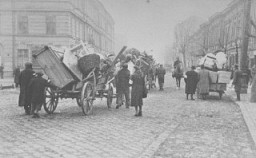
Shimshon and Tova Draenger, members of the underground in the Kraków and Warsaw ghettos and partisans in the Wisnicz Forest. Krakow, Poland, date uncertain.
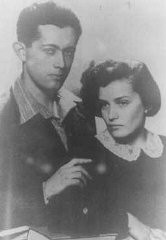
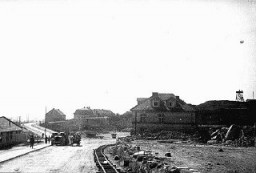
Prisoners receive meager food allocations at the Plaszow camp. Krakow, Poland, 1943 or 1944.
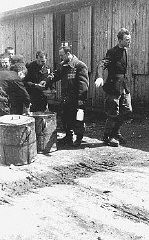
Amon Goeth (front left), commandant of the Plaszow camp, under escort to the courthouse in Kraków for sentencing. He was sentenced to death at his postwar trial on war crimes charges. Kraków, Poland, August 1946.
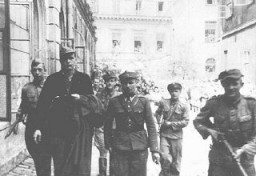
A mass grave dug by Jewish forced laborers for the bodies of individuals murdered by the NKVD in Lvov prisons. The NKVD (Soviet secret police) murdered thousands of Ukrainian nationalists, as well as some Jews and Poles, before retreating from the Nazi invasion. The Germans and their Ukrainian collaborators then used the massacre as a pretext for anti-Jewish pogroms, claiming that the Jews had helped the secret police. Lvov, Poland, July 3, 1941.
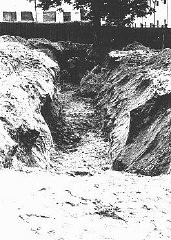
Members of the Lvov Jewish council are hanged by the Germans. Lvov, Poland, September 1942.
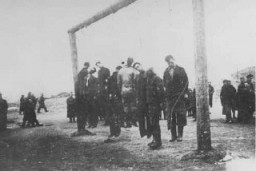
Shoes of victims in the Janowska camp were found by Soviet forces after the liberation of Lvov. Janowska, Poland, August 1944.
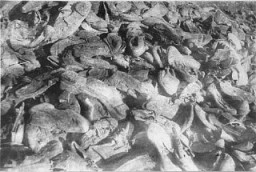
Residents of the Lublin ghetto. Poland, 1941-1942. (Source record ID: E9 NW 33/IV)
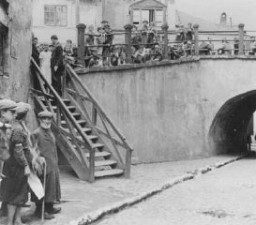
Lithuanian librarian Ona Simaite took food to Jews in the Vilna ghetto, helped hide many Jews outside the ghetto, and saved valuable Jewish literary and historical materials. Vilna, 1941.
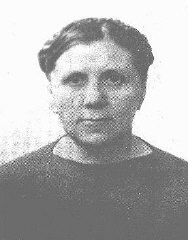
A group of Jewish partisans in the Rudniki forest, near Vilna, between 1942 and 1944.
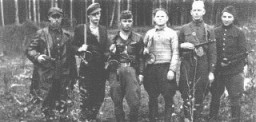
Located on Ulica Stara (Old Street), outside the Vilna ghetto, this building was used as a safe house by the ghetto resistance. Vilna, after July 1944.
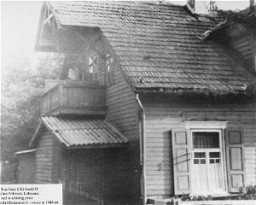
Abba Kovner (center) poses with Ruska Korczak (left) and Vitka Kempner (right) on a street in Vilna the day of the city's liberation.
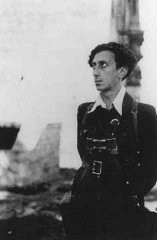
Family and friends are gathered for a Jewish wedding celebration in Kovno. Among those pictured are Jona and Gita Wisgardisky (standing at the back on the right). In the summer of 1941 soon after the German occupation of Lithuania, the Wisgardisky family was forced into the Kovno ghetto. During a roundup of children in the ghetto in 1942, Henia (Gita and Jona's daughter) was hidden in a secret room that her father built in a pantry in their apartment. Later she was smuggled out of the ghetto and…
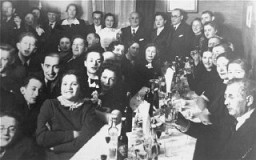
A group of children in the Kovno ghetto in Lithuania. This photograph was taken by George Kadish between 1941 and 1943.
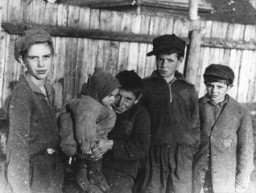
Jewish women return to the Kovno ghetto after forced labor on the outside. They line up to be searched by German and Lithuanian guards. Kovno, Lithuania, between 1941 and 1944.
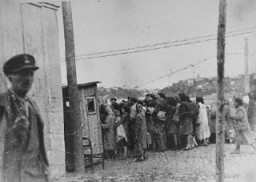
Photograph taken by George Kadish: a member of the Kovno ghetto underground hides supplies in a well used as the entrance to a hiding place in the ghetto. Kovno, Lithuania, 1942.
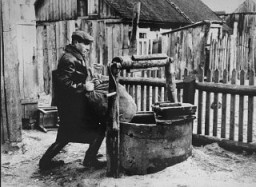
Deportation of Jews from the Kovno ghetto to a work camp. Lithuania, 1942.
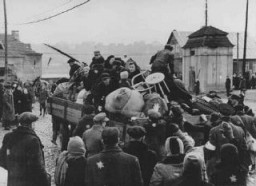
This clandestine photograph taken by George Kadish captures a scene during the deportation of Jews from the Kovno ghetto in German-occupied Lithuania in 1942.
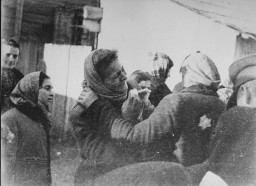
An assortment of antisemitic handbills, posters, and stickers from Germany, 1919.
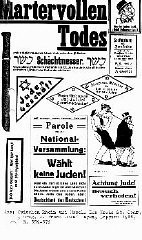
A pedestrian stops to read an issue of the antisemitic newspaper Der Stuermer (The Attacker) in a Berlin display box. "Der Stuermer" was advertised in showcase displays near places such as bus stops, busy streets, parks, and factory canteens throughout Germany. Berlin, Germany, probably 1930s.
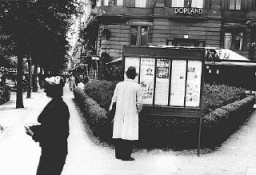
During the anti-Jewish boycott, SA men carry banners which read "Germans! Defend Yourselves! Do Not Buy From Jews!" Berlin, Germany, March or April 1933.
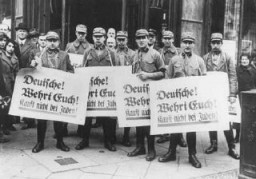
An SA member instructs others where to post anti-Jewish boycott signs on a commercial street in Germany. A German civilian wearing a Nazi armband holds a sheaf of anti-Jewish boycott signs, while SA members paste them on a Jewish-owned business. Most of the signs read, "Germans defend yourselves against Jewish atrocity propaganda/Buy only at German stores." Germany, ca. April 1, 1933.
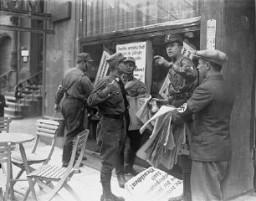
A sign outside a town in northern Bavaria warns: "City of Hersbruck. This lovely city of Hersbruck, this glorious spot of earth, was created only for Germans and not for Jews. Jews are therefore not welcome." Hersbruck, Germany, May 4, 1935.
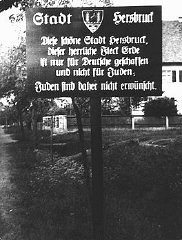
We would like to thank Crown Family Philanthropies, Abe and Ida Cooper Foundation, the Claims Conference, EVZ, and BMF for supporting the ongoing work to create content and resources for the Holocaust Encyclopedia. View the list of donor acknowledgement.